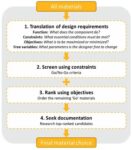On July 9, 2025, a DACtv session by Dr. Peter Levin explored the transformative impact of artificial intelligence (AI) on chip design, as presented in the YouTube video. The speaker, an industry expert, delved into how AI is reshaping electronic design automation (EDA), addressing the escalating complexity of modern chips and… Read More
Electronic Design Automation
AI Infrastructure: Silicon Innovation in the New Gold Rush
On July 18, 2025, Jeff Wittich, Chief Product Officer at Ampure Computing, delivered a compelling DACtv presentation, as seen in the YouTube video, likening the current AI boom to the 1848 California Gold Rush. Speaking in San Francisco, just 100 miles from Sutter’s Mill, Wittich drew parallels between the historical rush that… Read More
Large Language Models: A New Frontier for SoC Security on DACtv
On July 18, 2025, Mark Tehranipoor, chairman of the Electrical and Computer Engineering Department at the University of Florida and co-founder of Caspia Technologies, delivered a compelling talk at DACtv on leveraging large language models (LLMs) for System-on-Chip (SoC) security, as seen in the YouTube video. Addressing… Read More
AI and VLSI: A Symbiotic Revolution at DAC 2025
On July 18, 2025, a DACtv panel discussion titled “AI and VLSI: A Symbiotic Revolution” explored the transformative interplay between artificial intelligence (AI) and very-large-scale integration (VLSI) design. Moderated by Ramuni Nagasetty from NATCast. The panel featured Arijit Raychowdhury (Georgia Tech), Dr. Rob … Read More
The Future of Mobility: Insights from Steve Greenfield
On July 18, 2025, Steve Greenfield, an early-stage investor and author, delivered a compelling 45-minute talk at DACtv on the future of mobility. Quoting futurist William Gibson—“The future is already here. It’s just not evenly distributed”—Greenfield explored how emerging technologies and business models are reshaping… Read More
Siemens EDA and Nvidia: Pioneering AI-Driven Chip Design
On July 18, 2025, Siemens EDA and Nvidia presented a compelling vision for the future of electronic design automation (EDA) at a DACtv event, emphasizing the transformative role of artificial intelligence (AI) in semiconductor and PCB design. Amit Gupta, Vice President and General Manager at Siemens EDA, and John Lynford, head… Read More
Materials Selection Methodology White Paper
The Granta EduPack White Paper on Materials Selection, authored by Harriet Parnell, Kaitlin Tyler, and Mike Ashby, presents a practical and educational guide to selecting materials in engineering design. Developed by Ansys and based on Ashby’s well-known methodologies, the paper outlines a four-step process to help learners… Read More
AI and Machine Learning in Chip Design: DAC Keynote Insights
In a keynote at the 62nd Design Automation Conference (#62DAC) on July 8, 2025, Jason Cong, Volgenau Chair for Engineering Excellence Professor, UCLA, reflected on over 30 years in the DAC community, highlighting the transformative role of AI and machine learning (ML) in semiconductor design. The speaker, whose first DAC paper… Read More
Enabling the AI Revolution: Insights from AMD’s DAC Keynote
In a keynote by Michaela Blott, AMD Senior Fellow, at the 62nd Design Automation Conference (DAC) on July 8, 2025, explored the trends shaping the AI revolution, emphasizing inference efficiency and hardware customization. While acknowledging AMD’s efforts in scaling GPUs and achieving energy efficiency goals (30x… Read More
AI Evolution and EDA’s Role in the Fourth Wave: William Chappell’s DAC Keynote
In a keynote at the 62nd Design Automation Conference (DAC) on July 8, 2025, William Chappell, Vice President of Mission Systems at Microsoft, reflected on the intertwined evolution of AI and semiconductor design. Drawing from his DARPA experience, Chappell traced AI’s progression from 2016 onward, highlighting its… Read More






The Quantum Threat: Why Industrial Control Systems Must Be Ready and How PQShield Is Leading the Defense